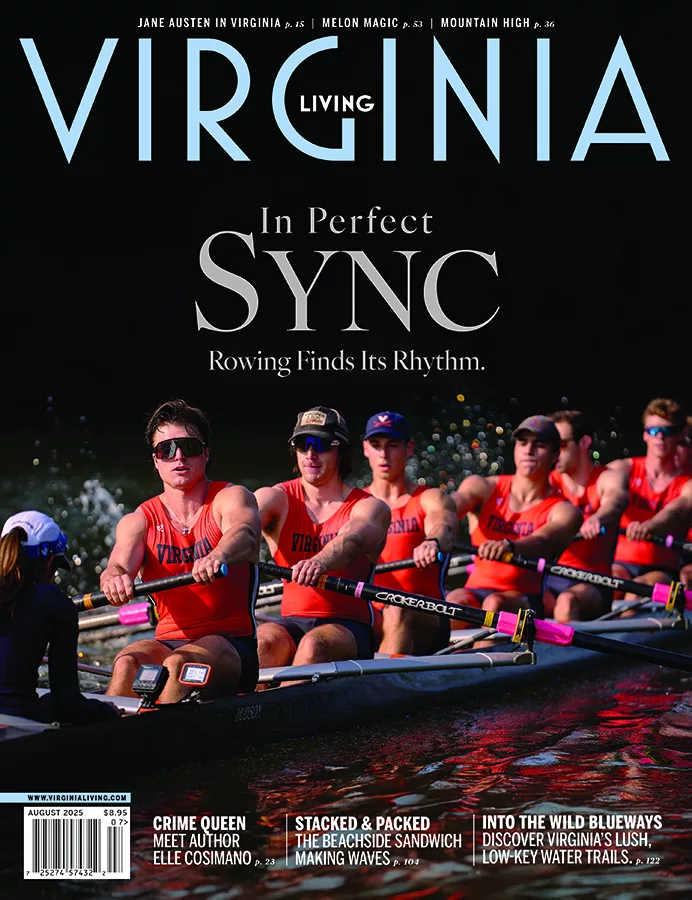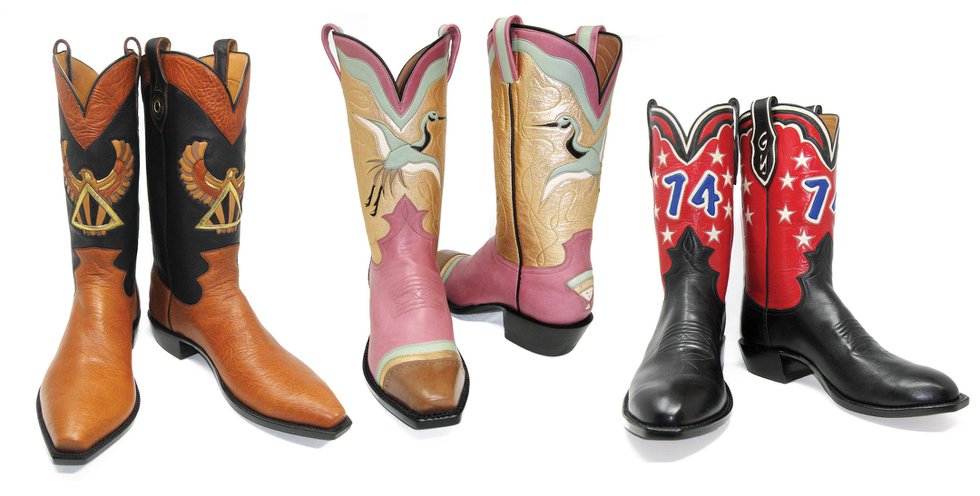Misadventures in Appalachian clog dancing.

Illustration by Paul Hostetler
“Let’s start with lesson one,” Mary Smith says to her seven beginning clogging class students. “Can you tell your left foot from your right foot? Most every step starts on the left foot. Point to your left foot.”
We all laugh. Surely she’s being facetious. Still, we all oblige. Six of the seven dancers point to their left foot.
Unbelievably, one guy points to his right foot.
It actually kind of makes sense for a split second though, because his right foot is straight across from Mary’s left foot and hey, you can be a little nervous trying something for the first time. Plus, it’s easy to get distracted here in a barn way out in Northern Virginia wine country having to field questions about your feet.
“What’s your name again?” she asks me.
“Bob.”
“Bob. Other foot.”
She continues. “Lesson Two. You step down with your left. That’s called a ‘step.’”
I totally nail the “step” by taking a step. I nail it again and again by taking more steps. “Awesome,” she says as if she means it. Then during Lesson Three I bend my knees to the downbeat correctly more times than one obviously more experienced lady down at the end of the line. I may be the village idiot here, but I feel like I’m quickly becoming the Fred Astaire of village idiots.
That’s mainly because Mary Smith, the founder and mother hen of the Purcellville-based Blue Ridge Thunder Cloggers (BRTC), is gifted at both this old-timey mountain folk tap dance and the relentless effervescence demanded of educators faced with students like me. It takes the kind-hearted and impassioned missionary Marys of the world to pass on to new generations those rich bits of our folk heritage—the clogging, the quilting, the moonshining and more—that might otherwise molder with the buggy whips.
“You have to keep it fun,” she says. “This is all about fun.”
Appalachian clog dancing is usually performed to traditional country and bluegrass songs and is characterized by bent loose knees and a “drag-slide” motion of the foot across the floor. As simple as it may seem, it is in fact, at least for the more gifted dancers, a complicated mash-up of cultural traditions. In the 1700s, Scottish and Irish settlers brought over the stepdance, which most people would now associate with the wildly popular production Riverdance, in which Irish women tap with astounding precision (while pretending to have no arms). In America, clogging also has been influenced by traditional American Indian dances and African-American buck dancing.
Indeed, clogging is America’s ultimate melting pot.
“I think a lot of people see clogging as this little old folk dance that a few people do,” says Dorothy Stephenson, a 26-year clogging veteran from rural Highland County. “Beyond the basics, it’s actually a very dynamic dance that’s constantly evolving. We’ve incorporated hip-hop and ballet in recent years. It’s about as American as it gets.”
Stephenson lives in a mountainous region an hour west of Staunton, a bucolic, sparsely populated area where clogging has always been a part of the cultural heritage. Stephenson herself started dancing in 1990, which entailed a 45-minute drive to town. But that long drive, she says, has always been worth it. She leads two dancing teams now, and her team members have long been like family: “We love like brothers and sisters; we fight like brothers and sisters. We have birthdays together; we go to weddings together. This is about so much more than just dancing.”
This year, Stephenson’s group will be hosting the first-annual Rally in the Valley competition and exhibition July 23 in Staunton. She expects five to seven teams will compete: “I’m not sure how big it’s going to be, but I know it’s going to be a lot of fun,” she says.
It is the end of the lesson and my partner for the closing song, the rollicking Virginia Reel, is 30-something Loudoun County resident Natalie Sloof. She tells me she has taken several years of tap dance and ballet: “I’ve just always loved to dance. This is a great chance to get out of the house and dance again.”
She looks me straight in my befuddled eyes and drags me through the tunnel and back again amid a racket of clapping and canned bluegrass. She tells me I’m doing a good job. Everyone tells me I’m going a good job.
They are lying, of course. But the encouragement mixed with jokes and laughter is a recipe for high-energy fun. These are the type of beginners’ classes that keep young people coming back for more, and bad dancers (like that guy who was so uncoordinated and easily confused he didn’t know his right foot from his left) coming back until they’re, well, mediocre. Some even get good and compete against other top cloggers up and down the East Coast. My goals are not as lofty. I just want to be able to find my left foot.
For more information about Rally in the Valley on July 23 in Staunton and the state’s more than 40 clogging groups, go to RhythmicAlliance.com, VirginiaClog.Wordpress.com and BRTC.us








